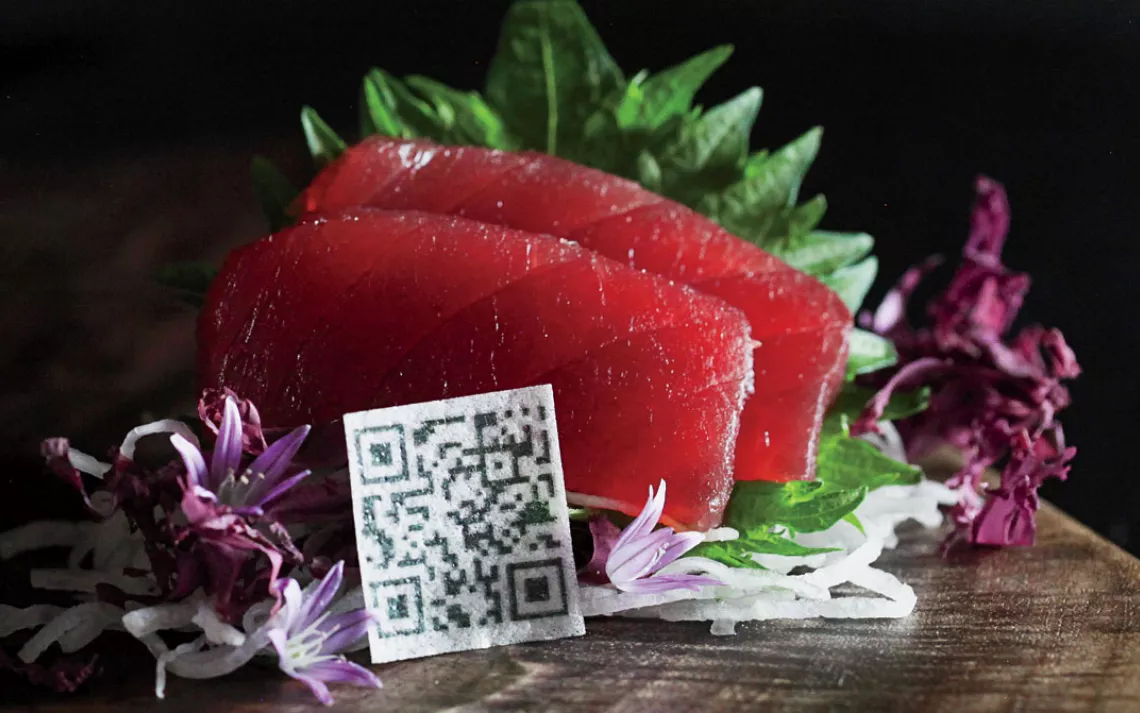While training as a sushi chef in Hawaii—among the most remote archipelagos in the world—Rob Ruiz worked at a restaurant that sourced its seafood locally out of necessity. Once he started working on the mainland, he expected other chefs to know exactly where their fish came from, too.
But whenever he asked his colleagues, they either didn’t know or merely repeated what their supplier had told them. “They had no way of proving it,” Ruiz says. Predictably, a 2013 study by the conservation group Oceana found that restaurants often misidentify the fish they are serving. Thirty-three percent of samples were mislabeled on the menu—usually as a pricier, safer-to-eat, or more sustainable catch. A whopping 87 percent of samples listed as snapper turned out to be cheaper farmed fish, like tilapia, while 84 percent of “white tuna” was escolar, which can trigger severe diarrhea.
Frustrated by the seafood industry’s lack of transparency, Ruiz wondered if there was a way to track fish straight from the source. After noticing QR (quick response) codes cropping up everywhere, he got the idea to print his own on rice paper with edible ink and perch them atop his sushi. When diners at his restaurant, the Land & Water Company in Carlsbad, California, scan the codes with a smartphone or tablet, a free app takes them to the website of the National Oceanic and Atmospheric Agency.There, they can learn about the sustainability of their dish, from who caught it to the health of the stock. Ruiz currently uses codes on six species—salmon, albacore tuna, yellowfin tuna, yellowtail, sea urchin, and cobia.
Seafood traceability tech has been catching on elsewhere. Moshi Moshi in London launched edible QR codes with the Marine Stewardship Council in 2012, and wholesalers like Red’s Best and Santa Monica Seafood have also begun using them. The Trace and Trust program, developed in New England, compiles information on each catch and delivery entered on its website. Restaurants can download waitstaff talking points, fact cards, and QR codes that customers can scan to learn the origin of fish on the menu.
Nathan Phillips, the general manager of Catalina Offshore Products, which partnered with Trace and Trust in 2014, thinks such practices will only grow in popularity: “To be able to stand in front of diners and say with confidence, ‘This is how that was caught’—it’s going to be contagious.”
Such technologies could help tackle seafood fraud—by shining a light into murky water. Ruiz says, “We’ve eaten our way into this problem.... If we continue asking where our seafood comes from, we can eat our way out of it.”

